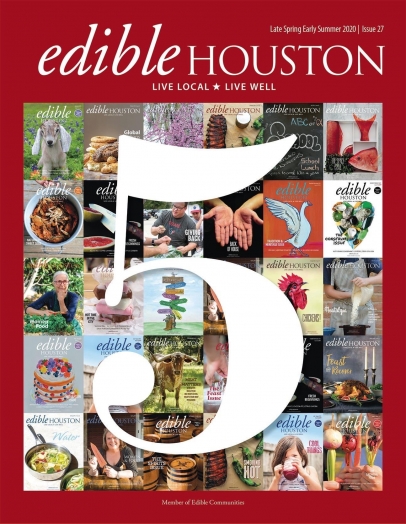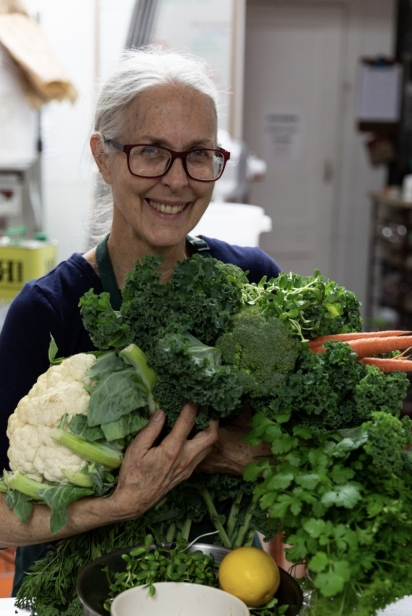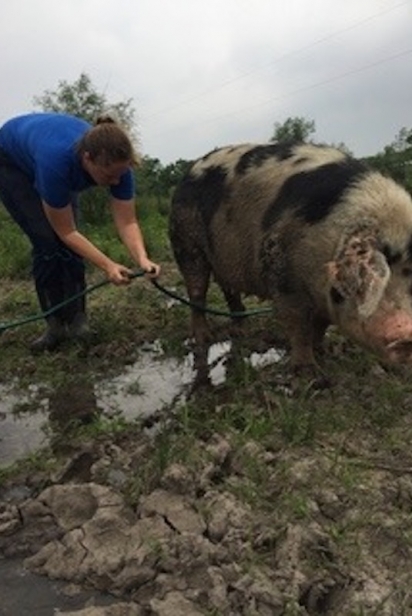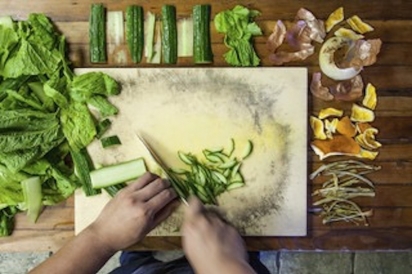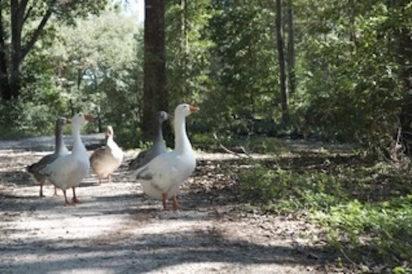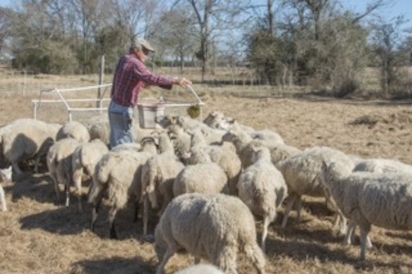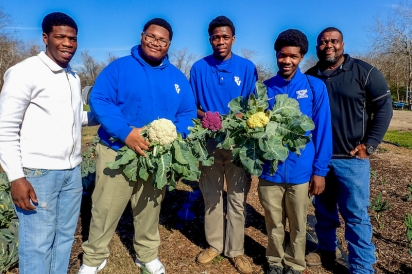Cheers to Five Years at Edible Houston
I can’t believe it has been five years since I first visited Blue Heron Farms for “Goats Galore,” a story in the inaugural issue of Edible Houston. I took Grand Parkway 99 to connect with the 290. This stretch of the 99 had just opened at the time. Driving across an expanse of nature, I wondered out loud: “Why is this highway here?”
Raequel Roberts, in the car with me and the one to write the story, remarked that it was city planning and that the whole area would be developed. The die-hard inner-loop urbanite had seen it all before in Houston. First come the loop roads—the 610, the Beltway—then the development, forever spreading the urban sprawl. I think it was right then, right there, crossing wilderness and wildlife on that brand-new half-loop, that I knew why Edible Houston would matter.
As part of Edible Communities—one of more than 80 locally owned publications throughout North America—we give voice to the local food community. It makes for a powerful movement, one that maps where our food comes from, region by region, city by city. Edible Houston, I think—no, I know—is vital in a city the size of Houston. It is the green, local platform that focuses exclusively on the people who grow, raise and produce our food—and makes sure their stories are heard—addressing at the same time the environment and conservation; issues like food waste, sustainable food production, urban farming, wellness and seasonality.
In the five years since I traversed the 99 back in February 2015, that expanse of nature has largely disappeared under urban development, exactly like Roberts said it would. Heck, there’s even a giant FedEx distribution center now.
And in that same time span, we as Edible Houston have been listening and learning, mapping our local food community. We’ve made it our business to shine a light on the green, the local, the small and independent. Like verbal snapshots, see here some of what these local voices have been saying in our past issues.
“Every animal here has to have a job.” (From “Goats Galore”, Lisa Seger of Blue Heron Farm)
"We want to help change this community and others like it from a food desert to sustainable food producers. We also want to be better stewards of the water.” (From "Growing Up Growing Food", Coach Timothy Tate at Pro Vision Academy)
“This too is a part of town with limited access to quality produce.” (From “Growing Healthy Food, Building a Healthy Community”, Tommy Garcia Pratt of Finca Tres Robles)
“I don’t think we’re ever done building our community, and I’m sure I won’t ever fully realize what I meant in 1992 when I said I wanted to change the way Houston eats.” (From “Pope Is Cooking for a Change”, chef Monica Pope)
“Aren’t they [heritage breed Pilgrim Geese] beautiful? See, the males have extremely little grey feathering, and it is mainly on their wings, and the females only have white feathering on their faces.” (From “Birds of a Heritage Feather”, David Glover of Tejas Heritage Farm)
“It’s recognizing the work that someone put into growing something. You’re not throwing it all away.” (From “From Scraps to Scrumptious”, chef Justin Yu talking about avoiding food waste in the kitchen, using scraps)
“Typically, most organic farmers tend to put more nutrients in the soil—trace elements, minor nutrients, more than the 16 you see in a bag of fertilizer.” (From “Soil Scientist Dishes About Dirt”, John Ferguson of Nature’s Way Resources)
“Fifty to 60 years ago there was an infrastructure in place for local agriculture and now there’s not.” (From “Home Sweet Farm Growing a Network”, Brad Stufflebeam, talking about connecting big-city consumers with their local growers and producers)
“We think bison is perfect the way it is, the way it always has been, and that’s the way we’re going to keep it.” (From “Supermeat on the Prairie”, Patrick Bierschwalen of Katerra Exotics talking about raising bison as a healthy alternative to beef)
“I grew up in Kentucky, eating food out of our garden during the summers and canning vegetables for the winter. The food chain was simple: Grow together, cook and eat at the family table. Heritage seeds are seeds with a story and I want to continue their story.” (From “Hooves, Hens and Heritage”, Glen Miracle of Laughing Frog Farm)
“We have 18 cows [bull and calves included] and they have all this to roam. If this was a feedlot, there would be hundreds of cattle just in this one paddock alone.” (From “Little House on the Shiner Prairie”, Patricia Tieken about her multi-paddock-grazing cattle)
“Our whole idea was to take cattle production out of a commodity-based business where [the cattle are] all treated the same no matter how well they were taken care of, how well they were developed, and to try to create a premium for doing it the right way, for being a good steward of the livestock and the land.” (From: “Simply Bovine”, Bob McClaren of 44Farms)
“What I failed to understand as a child was that this disconnect—the disparity between food from the garden versus food from the supermarket—was a byproduct of human intervention since the advent of industrialized agriculture.” (From “The Journey Back to Farming”, farmer Becca Verm)
“I have a responsibility to take care of others because these are the individuals that take care of me, whether that be our staff, our friends, our farmers, our community.” (From “Bear Hugs and a Big Heart”, chef Chris Shepherd)
“Consider the love, care, time and money that our farmers have put into getting us consumers the best chicken they possibly can. It is how we should look at “buying local” in general.” (From “Chicken Dance”, chef Richard Knight at Whitehurst Heritage Farm)
“If we do not take care of our women, our families and communities are going to fail. And I’m not going to wait for us to flip the House and flip the Senate and flip the presidency.” (From “Cool Chicks, Hot Mission”, Lori Choi of I’ll Have What She’s Having)
“There used to be monarchs all over the prairie.” (From “Birth of a Prairie”, prairie conservationist Jaime González)
“In the three-and-a-half years since we began rescuing food, we’ve rescued 1.3 million pounds of food worth over $6 million. We started with one charity site and now we’re up to 56.” (From “Let’s Waste Not, so We Want Not”, Barbara Bronstein of Second Servings of Houston)
“[Bees] are dependent on whatever we choose to beautify our public spaces with.” (From "Oh, Honey, Bee My Key to Healthy Eating", Juliana Rangel, PhD, assistent professor of Apiculture at the Texas A&M University Honey Bee Lab in College Station)
“A lot of the times we think of ourselves as separate from our environment. My approach is that I’m not. I am part of what’s happening here, so how can I make the least amount of impact and do good?” (From “Happy as a Pig on a Dairy Goat Farm”, Stacey Roussel of All We Need Farm)
“I never understood why we would be ordering all of these products from other places when it’s all right here. So, the ‘local’ bug sort of took over me before it was even a thing.” (From “Houston’s Heritage Hog Rancher”, chef and rancher Felix Florez of Black Hill Meats)
“Oysters are so important to our environment. If you don’t have the oyster, you’re not going to have a healthy ecosystem.” (From “Sustainability on the Half Shell”, Lisa Halili of Prestige Oysters, about Galveston Bay)
“We have this treasure here. I like to think that we can go to the beach and be lucky enough to see this amazing bounty that, apparently, most of us don’t even know is there.” (From “A Deep Dive into Texas Seafood”, PJ & Apple Stoops about local Gulf fish)
“Unless you’re changing your menu every day nobody can really go 100% local.” (From “When Restaurants Want to Go the Extra Mile", Aaron Lyons of Dish Society, talking about why sourcing locally may be worth the extra effort but it’s not that easy)
“It’s ALL education. And it is tough because while we need more people involved, we need people that help make [local organic food] affordable for everyone.” (From “Cooking Up a Sustainable World”, Pat Greer of Pat Greer’s Kitchen)
As we struggle to deal with the Covid-19 crisis, supporting local is now more important than ever. For the businesses—be they farm, restaurant or shop—support from their own community is vital. But for us consumers, too. Supporting local brings us a step closer to food sovereignty (defined as the right to access enough food for a healthy, active lifestyle at all times).


